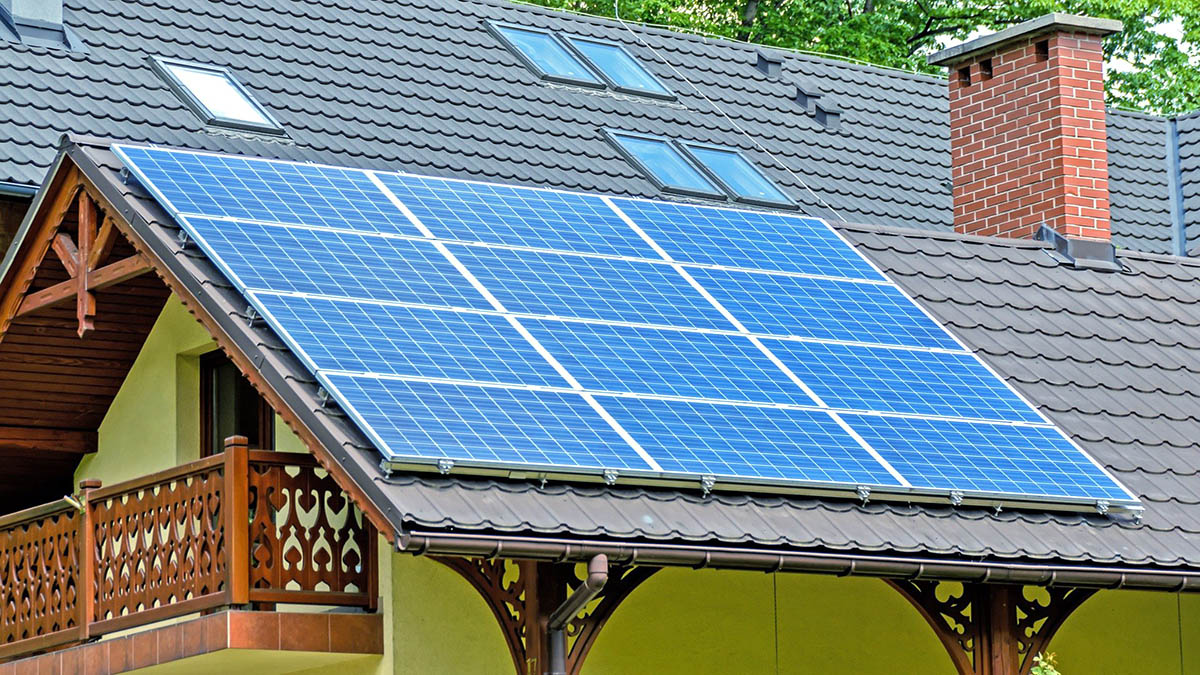-Tannistha Ganguly
Electricity supply is an integral part of Right to Life under Article 21 of the Constitution of India. It is a basic human necessity, especially for the developing countries with large population like India. Shortage of significant amount of power generation causes various problems on a daily basis that’s why energy has become one of the main concerns for the growing future. The global energy demand is continuously increasing. At present around 83% of the energy production is dependent on fossil fuel resources such as oil, gas and coal. These resources are limited and their extreme usage is causing global warming.
In order to provide a sustainable power production for future and to cope with increasing energy demand the same time, energies are being extracted from renewable resources such as wind, solar, geothermal and ocean. Right now, solar energy is being produced and utilised for business as well as household purposes. Even solar cities are being planned to save power from the traditional power sources. Recently, the Tamil Nadu government made individual solar generation facility mandatory for new multi-storey buildings.
3 basic benefits of using solar energy
- Power can be consumed for a longer period of time from natural sources with proper economic efficiency and low maintenance cost.
- The pollution free system makes it environment friendly.
- With the help of sunlight, power can be produced from anywhere.
With evolving technologies people are installing rooftop solar panels for residential purposes. 2,000 watts of electricity by solar energy generation requires around 200 sq. ft. of rooftop space. Rooftop PV systems on residential buildings typically feature a capacity of about 5 to 20 kilowatts, while those mounted on commercial buildings often reach 100 kilowatts or more. The initial installation is costly but the maintenance cost is way too less than other power sources. Generally, there are three kinds of solar rooftop systems off-grid, on-grid and hybrid.
On-Grid Solar Power
This system works in sync with power grid and can be installed with or without net metering. The surplus power generated is directly sent back to the power grid. When there is not enough sunlight the system runs with the power supplied by the grid. On-grid systems can be used to reduce electricity bills even if the consumption is high. This system can be used for things such as lights and water heating systems which are typical household chores.
Advantages
- On-grid solar systems are very cost-effective and easy to install.
- It reduced electricity bills even on heavy usage.
- The surplus power generated by the system can be utilised to generate income for the residential users.
Cost of On-Grid Solar Power System *
| System Capacity | System Cost | Cost / Watt |
|---|---|---|
| 1 kW | ₹ 74,000 | ₹ 74 |
| 5 kW | ₹ 3,62,000 | ₹ 72 |
| 10 kW | ₹ 5,76,000 | ₹ 58 |
Off-Grid Solar Power
It works independently of the grid and stores the power generated in batteries. The solar panels, battery, inverter, charge controller and grid box are the main constituents of this system. Panels generate enough sunlight during the day and use excess power during night. However, the required specialised equipment makes the system installation a bit costly.
Advantages
- Self-sustainable system can work independently without grid thus, becomes ideal for remote areas with no power access from the grid. A number of places in India face frequent power cuts which hampers daily rhythm. Off-grid solar systems can provide an economical and viable long-term backup solution to overcome the problems occurring during frequent power cuts.
- The generated power is enough to be stored and used at night with down grid and power cuts.
- Grid failures and shutdowns will not affect your power supply.
Cost of Off-Grid Solar Power System *
| System Capacity | System Cost | Cost / Watt |
|---|---|---|
| 1 kW | ₹ 1,36,000 | ₹ 136 |
| 5 kW | ₹ 6,44,000 | ₹ 129 |
| 10 kW | ₹ 11,95,000 | ₹ 120 |
Hybrid Solar Power
Another Solar Power System is possible by combining the two described above which is Hybrid rooftop system. Hybrid Solar Power is connected to the grid but also has battery backup.
Advantages
- The hybrid solar systems can provide power uninterruptedly, without any disruption, because the batteries connected to them store the energy.
- As the batteries are connected to the system for storing the energy, there is no waste of the excess energy generated on bright sunny days.
- A hybrid solar system may have technology that adjusts the energy supply according to the devices they are connected to, be it an air conditioner that requires high power or a fan which has less requirement.
Cost of Hybrid Solar Power System *
| System Capacity | System Cost | Cost / Watt |
|---|---|---|
| 1 kW | ₹ 88,000 | ₹ 88 |
| 5 kW | ₹ 4,01,000 | ₹ 80 |
| 10 kW | ₹ 7,85,000 | ₹ 78 |
Solar panels are the future of world’s power generation. Cities are planning for a complete solar panel support not only by business entities but also households.
Rooftop Solar projects in India
- Jawaharlal Nehru National Solar Mission (JNNSM) aims to install 100 GW of solar capacity in the country by 2022, of which 40 GW is expected to be achieved through decentralised and rooftop solar power projects.
- The Indian Solar PV market has seen significant growth rising from 40 MW to more than 26,000 MW in the last eight years. As on 13th February 2019, the installed capacity of rooftop solar power plants in India is 1,443.74 MW. The estimated realistic market potential for rooftop solar PV in urban settlements of India is about 124 GW. It may be noted that the current total installed power generation capacity is 374.2 GW.
- As per Institute for Energy Economics Financial Analysis (IEEFA), “from a historically low base, rooftop solar has been the fastest growing renewable energy sub-sector in India, with a compound annual growth rate (CAGR) of 116% between 2012 and 2018.”
- IEEFA estimates that for the next three years, rooftop solar installs will grow at a CAGR of 50% suggesting a cumulative 13 GW of installed capacity by FY2021-22.
- Cities like Chandigarh, Bhubaneswar, Gandhinagar, Nagpur and Mysore have been identified as model solar cities. The majority of the solar capacity has been installed on rooftops. MNRE selected Chandigarh as a model solar city, has set a target to install 69 MW of solar plants, both in residential and government buildings, by 2022.













